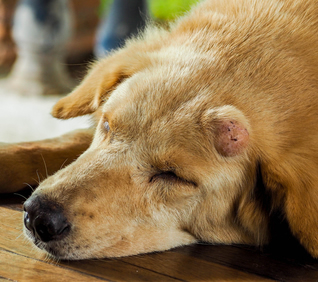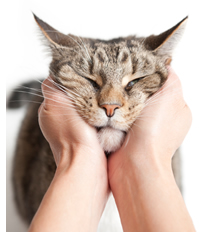
What are lumps on pets?
Whilst lumps on pets are more frequently seen in older pets, younger animals can sometimes get them as well. Any lump or bump needs to be checked. Sometimes, they are harmless, but sometimes they are a sign that something else may be happening. Please don’t ignore lumps that you find on your pet. They don’t go away by themselves, and whilst common, they are not normal.
It is recommended that you check your pet’s body on a regular basis. This will allow you to become more familiar with what’s normal and recognise any changes that occur.
Checking for lumps on pets
You can check for lumps on your pet by running your fingers through their coat starting with the head, back, sides, chest, belly, and down the legs. If you feel something unusual, notice a new lump or notice that a lump has changed in size, shape and perhaps colour, we highly recommend that you have it looked at by your local Greencross Vets.
Although some lumps may not cause a concern, some can be very dangerous if left untreated.
What kinds of lumps are there?
Lumps are common on dogs. Six of the most common are listed below. But there are more. In each and every case, diagnosis must be made by a veterinarian and should not be left without assessment.
Lipomas – or fatty lumps
Lipomas are probably the most common lump found on dogs and are more common in overweight pets. These are benign cancers that can grow quite slowly and rarely spread. In some cases, they may need to be removed.
Mast cell tumours
Mast cell tumours are a common type of cancer that can take on many different appearances Some breeds of dogs may be more commonly affected, but all breeds do get mast cell disease. Mast cell tumours are potentially very serious and early detection and diagnosis is the key.
Breast cancer – mammary tumours
While some lumps in the mammary glands in female dogs can be seen, others are amongst the most aggressive forms of cancer. In male pets, mammary lumps are often particularly nasty. In all cases, these lumps must be checked.
Warts
Warts are more common in older animals and look like a small tag of skin attached to the coat. They can be irritating and in some cases require removal.
Sebaceous cysts
These are swellings filled with a creamy matter, often seen in older pets and found in the middle of the back. Sometimes the swellings become quite red, but normally do not cause any problems. Your local Greencross vet will be able to diagnose these and recommend an appropriate treatment path.
Histiocytoma
Histiocytoma are a red button like lump that are usually found on young pets. They usually go away in about 2-3 months. However it is highly recommended to have any lump checked by your vet.
How can I tell if a lump on my pet is cancer?
You cannot tell whether a lump is cancerous just by looking at it. Your veterinarian will examine the lump and recommend the most appropriate testing moving forward. They will also examine your pet to see if they are healthy and if there are any other growths present.
Biopsy is the best way to diagnose whether a lump is harmful or not. This involves putting a small needle into the affected area to collect cells or by sampling the lump while your pet is under anaesthetic. Once diagnosed, your vet will advise you of the best possible treatment.
Types of cancers – benign or malignant
Benign – benign lumps may grow but usually, do not spread. Some growths may cause issues depending on where they occur. If they restrict movement, cause discomfort, or affect your pet’s daily activities, they will need to be removed.
Malignant – malignant lumps are more aggressive lumps which grow and can spread through the body and affect organs like the lungs and liver. Malignant growths must be removed before they spread elsewhere.
 What are the treatments?
What are the treatments?
Treatment generally involves surgical removal. However, if the lump is malignant, your vet will need to make sure that cancer hasn’t spread to other parts of your pet’s body. Radiographs (X-rays), ultrasounds, and other diagnostic procedures may be required.
A final word on lumps and bumps…
A watchful eye is rewarded. Noticing changes in your pet’s health, including the appearance of lumps and bumps on their coat, can lead to early diagnosis and successful treatment. Always check with your veterinarian if you notice any changes, or if you have any concerns about your pet’s wellbeing.

 Greencross Vets
Greencross Vets 




